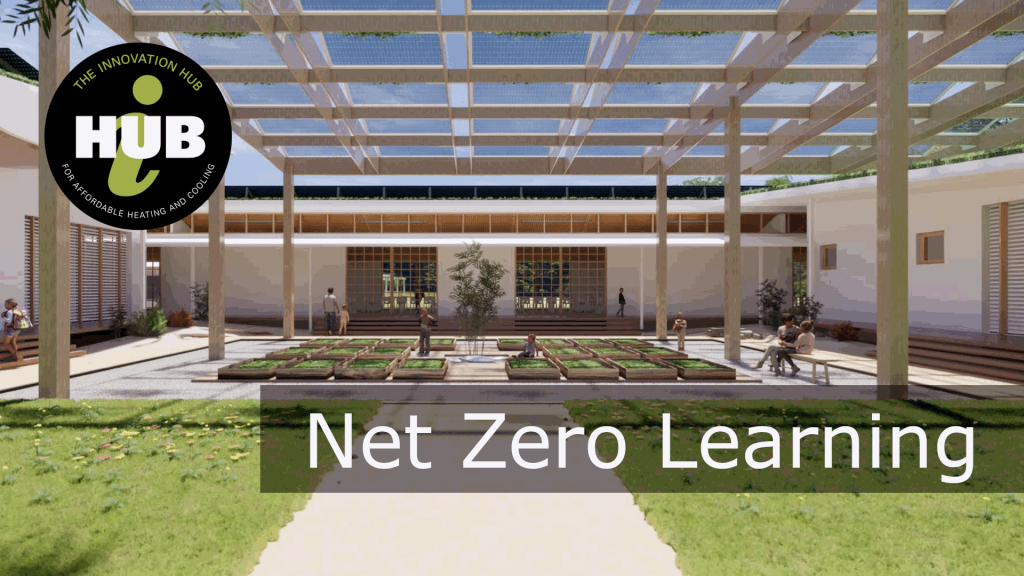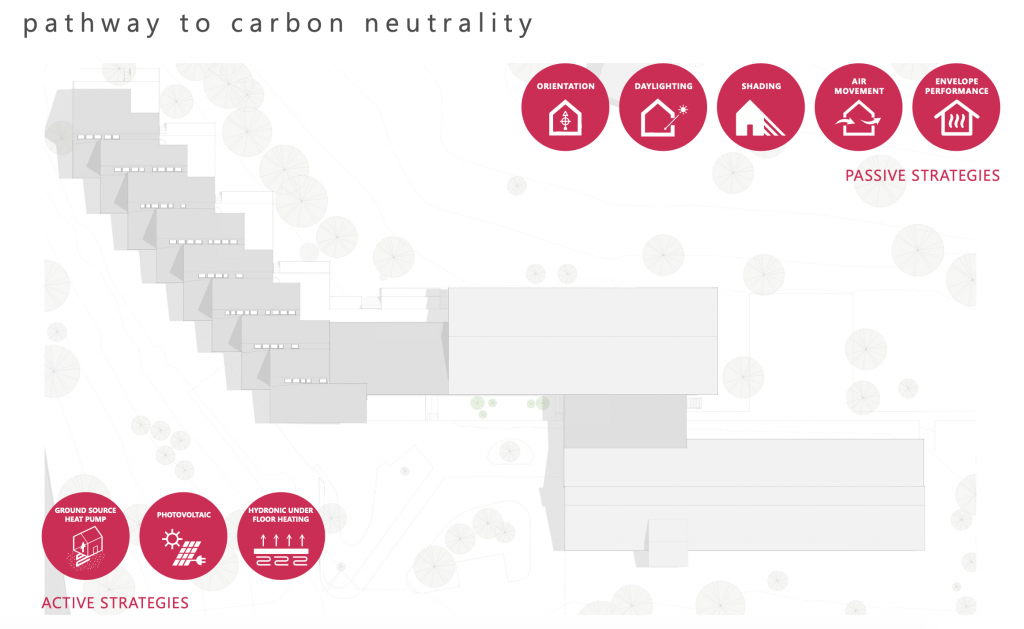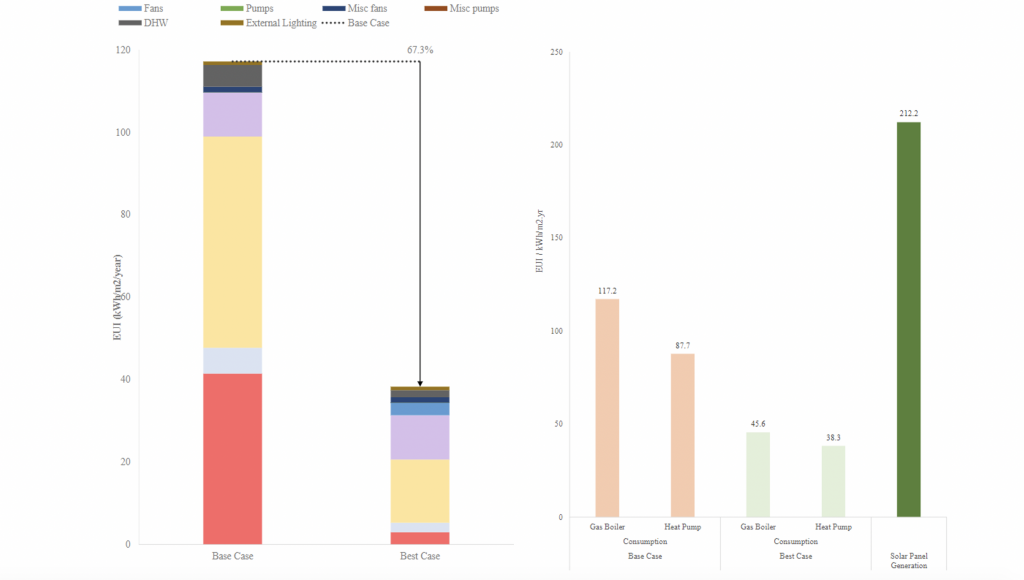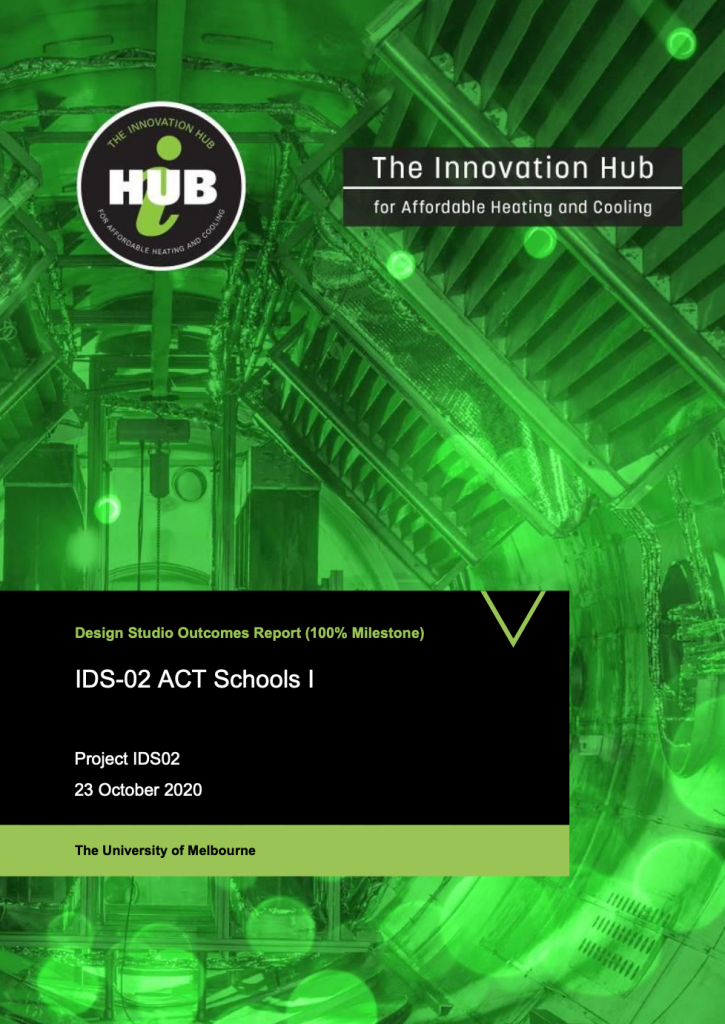This post presents research on Integrated Design using Schools as a case study. The work was undertaken as a part of ‘i-Hub’, a ‘towards zero carbon’ HVAC industry initiative initiated by The Australian Insitute of Refridgeration and Air Handling (AIRAH), and funded by The Australian Renewable Energy Agency (ARENA). The research was carried out in the Melbourne School of Design (MSD), at The University of Melbourne. Full research report download is available at bottom of this page.

Solar PV array integrated with playground/market garden canopy shading – Enquan Tang
Significant cultural barriers exist in the design of sustainable buildings. The root cause of many of these barriers is the relationship of the engineering and architectural disciplines in the design environment. The i-Hub Integrated Design Studios aim to change this.
The studios explore the design of different building typologies focusing on the collaborative relationships between architect, engineer and client.
Schools and the education sector represent almost 30% of all non-residential floor area in the built environment. As such any gains in renewables use and zero carbon initiatives able to be implemented in this typology will have significant impact.
The studio brief included both refurbishment and new build components to assist the ACT education directorate and government in achieving their ambitious target of net zero emissions by 2045.

Sustainable Initiatives map – Khue Nguyen
Sixteen architectural students explored design solutions that focused on renewable energy and the facilitating technologies. Integration of architectural and engineering solutions along with improved pedagogical outcomes were explored.
Studio Partners:
- ACT Government (Beth Mitchell, Director – Asset Strategies, Sustainability and Environment)
- Grimshaw Architects (Damon van Horne, Associate Principal)
- Arup (Nick Adams, Principal; Jessica Hogg, Senior ESD consultant)
- LEARN Research Hub (Ben Cleveland, Senior Lecturer)
- The University of Melbourne (Josephine Lettieri, Patricia Stocca, Joint Studio Leaders)
The following findings/observations came from the studio:
Facilitating Integrated Design:
- There is a high level of excitement and buy in to the concept of integrated design meaning simply articulating this as a project goal achieves some gains.
- Integrated design requires a ‘design co-author’ mindset in all participant designers.
- Definition of common goals is a key priority with tasks set at a detailed level as well as aspirational level.
- Integrated design benefits from active third-party curation.
- Integrated design happens over a limited time window.
- Design innovation emerges from consolidating competing interests.
- Architects are initially often not familiar with the implications of different technologies on their project layout.
- Academic education plays a key role, in particular when bridging the Architect/Engineer divide.
Sustainable School design
- Achieving carbon neutrality in the design of schools is possible. Initiatives explored included:
- Passive design measures
- Optimising the building envelope
- Fixed and dynamic shading
- Operable façade elements
- Wintergardens and green roofs
- Active design measures
- Introduction of rooftop solar panels and solar panels integrated into shading devices
- LED light fittings
- Mechanical ventilation with heat recovery
- Introduction of heat pumps (air source/ground coupled)
- Shift from natural gas consumption to all-electric services strategies.
- Passive design measures
- Moving from a standard practice existing building to incorporating best practice initiatives results in Energy Use Intensities (EUIs) less than 40 kWh/m2.yr, with reductions in energy demand ~58% and energy consumption >52%. Further reductions expected to be realised through more effective control strategies such as daylight linking. Electricity generation from onsite roof-top or shading device integrated solar panels is predicted to exceed more than four times this amount. This indicates that schools can be net positive energy in operation, with annual electricity generation exceeding annual consumption.

Infographic from Arup ‘vetting report’ showing relative energy components (Potential for Solar PV generation is 4x Efficient Energy Use Intensity)
Downloads (opens pdf in new tab)
The full report including learnings on how to facilitate integrated design as well as technical findings on the potential for sustainable data centres is located here:

University of Melbourne Researchers
- Dominik Holzer (Senior Lecturer, MSD)
- Brendon McNiven (Enterprise Professor, MSD)
- Lu Aye (Professor, MSE)
We would be happy to take comments, field queries or provide further information. Please contact brendon.mcniven@unimelb.edu.au with any requests.
